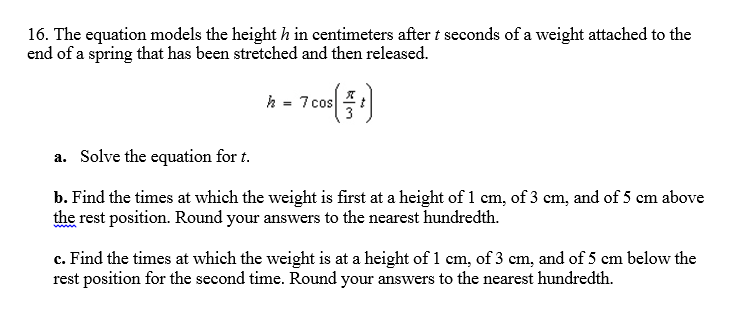Good morning! Can someone help me please? Thanks!

1 Answer
Motion
Explanation:
Set t and h = 0, at the time of rest at nadir. Then
The period =
Inversely,
See graph, for the inverse this vertical oscillation, by ( t sec, h cm )
plots. Slide graph
graph{(x-(3/pi)arccos( 1 - y/7 ))( y^2-1)(y^2-3^2)(y^2-5^2)=0[0 6 -8 8]}
The required Table:
( i ) ( t, 1 ) ): ( (3/pi arccos(6/7), 1 )
= ( (3/3.1416)(0.541rad ), 1 )
( ii ) ( t, 3 ) ): ( (3/pi arccos(4/7), 3 )
= ( (3/3.1416)(0.963 rad ), 3 )
( iii ) ( t, 5 ) ): ( (3/pi arccos(2/7), 5 )
= ( (3/3.1416)(1.281 rad ), 3 )
Reverse motion is similar. See answer.
